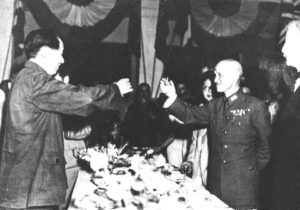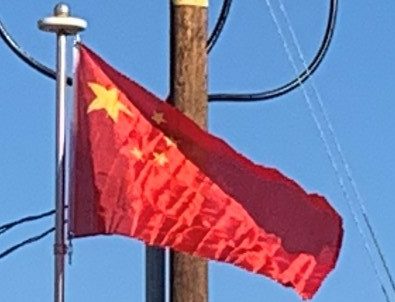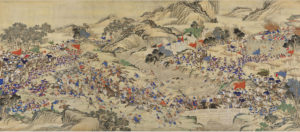
In the 19th century, the great Chinese diaspora began. Losses due to emigration were added to by conflicts and catastrophes such as the Northern Chinese Famine of 1876–79, in which between 9 and 13 million people died. The Guangxu Emperor drafted a reform plan in 1898 to establish a modern constitutional monarchy, but these plans were thwarted by the Empress Dowager Cixi. The ill-fated anti-foreign Boxer Rebellion of 1899–1901 further weakened the dynasty. Although Cixi sponsored a program of reforms, the Xinhai Revolution of 1911–12 brought an end to the Qing dynasty and established the Republic of China.
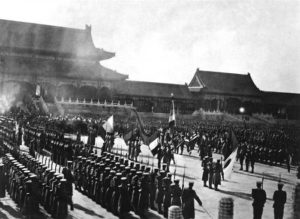
Republic (1912–1949):
On 1 January 1912, the Republic of China was established, and Sun Yat-sen of the Kuomintang (the KMT or Nationalist Party) was proclaimed provisional president. However, the presidency was later given to Yuan Shikai, a former Qing general who in 1915 proclaimed himself Emperor of China. In the face of popular condemnation and opposition from his own Beiyang Army, he was forced to abdicate and re-establish the republic.
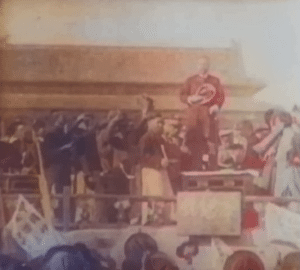
After Yuan Shikai’s death in 1916, China was politically fragmented. Its Beijing-based government was internationally recognized but virtually powerless; regional warlords controlled most of its territory. In the late 1920s, the Kuomintang, under Chiang Kai-shek, the then Principal of the Republic of China Military Academy, was able to reunify the country under its own control with a series of deft military and political manoeuvrings, known collectively as the Northern Expedition. The Kuomintang moved the nation’s capital to Nanjing and implemented “political tutelage”, an intermediate stage of political development outlined in Sun Yat-sen’s San-min program for transforming China into a modern democratic state.
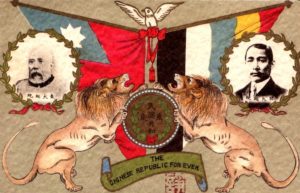
The political division in China made it difficult for Chiang to battle the communist People’s Liberation Army (PLA), against whom the Kuomintang had been warring since 1927 in the Chinese Civil War. This war continued successfully for the Kuomintang, especially after the PLA retreated in the Long March, until Japanese aggression and the 1936 Xi’an Incident forced Chiang to confront Imperial Japan.
The Second Sino-Japanese War (1937–1945), a theater of World War II, forced an uneasy alliance between the Kuomintang and the PLA. Japanese forces committed numerous war atrocities against the civilian population; in all, as many as 20 million Chinese civilians died. An estimated 40,000 to 300,000 Chinese were massacred in the city of Nanjing alone during the Japanese occupation. During the war, China, along with the UK, the US, and the Soviet Union, were referred to as “trusteeship of the powerful” and were recognized as the Allied “Big Four” in the Declaration by United Nations. Along with the other three great powers, China was one of the four major Allies of World War II, and was later considered one of the primary victors in the war.
